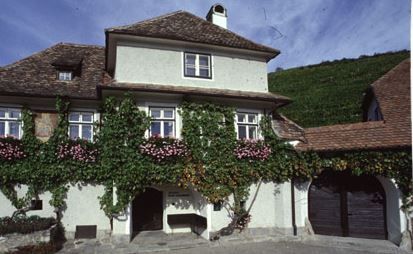29 Feb 2004 In your recent addition to the reference section on Pinot Blanc I believe you short-change Austrian Pinot Blancs. Although you list Rudi Pichler's, you don't really engage the issue of this variety in the better vineyards and human hands of the Wachau, Kamptal, and surroundings.
What has struck me – and also Terry Theise, who has written about the phenomenon in the course of pitching his own Austrian selections – is how enormously complex, age-worthy and ultimately satisfying are the best Weissburgunder from these climes, clearly in my view the best wines made from this grape anywhere on the planet. Furthermore, the vinificatory approaches and micro-climates are quite different one from another, suggesting just how many and interesting might be the future possibilities should more growers choose to explore them.
The front runners of my experience (roughly in order of declining profundity):
Hirtzberger Steinporz (Spitz/Wachau; former source of sand-gravel for laundering most of Vienna's wash, hence the name; tank-fuder) Hirtzberger's winery in Spitz in the Wachau as depicted on www.hirtzberger.com is shown here.
Hiedler Schenkenbichel (Langenlois/Kamptal; old rocky slope, principal source of his Maximum bottling, among the most time-tested of Danubian Austrian Pinot Blancs; fuder-barrel; often undergoes malo)
Jamek Hochrain (Joching/Wachau; immediately upstream from Rudi Pichler's Kollmütz; Urgestein terraces overlain with loess; tank; both Federspiel and Smaragd bottlings vie for attention nearly each year in their quite different styles; Altmanns have expanded their Pinot Blanc acreage here recently)
Neumayer (Inzersdorf/Traisental; conglomerate hillside; first crop only in 1986, very promising; tank-barrel)
Nikolaihof Baumgarten (Mauthern/Wachau; sand, gravel, mica; fuder-barrel)
Rudi Pichler Kollmütz (Wösendorf/Wachau; Urgestein terraces overlain with loess; tank)
Hiedler Spiegel (Langenlois/Kamptal; loess and Schwarzerd plateau; tank)
Salomon Oberstockstall Brunnberg (Oberstockstall/Wagram; loess terracing; tank)
While on the subject of the occasionally really exciting Pinot Blancs from this part of Austria, it is worth suggesting that your emphasis on low acidity (certainly accurate with respect to Auxerrois, other than for the few folks growing it in southern Holland!) is a bit misleading. The Wachau Pinot Blancs – at Jamek for instance – routinely vie with Riesling for having the highest acidity at their respective domaines. Interestingly, under the influence of noble rot, Danubian Pinot Blanc continues to track with Riesling in concentrating acidity (as witness the extraordinary Jamek 2001 TBA – first in the history of that estate).
A few further comments regarding Pinot Blanc in the rest of Austria. While Gross's Styrian rendition is undeniably fine, the best examples from Südsteiermark's best terroirs and foremost vintners, Polz and Tement, are generally more interesting. This variety appears to go back several centuries in Styria, and I could easily envision a revival. (Lackner-Tinnacher's Pinot Blanc from the Steinbach is also excellent.)
As for Pinot Blanc in Burgenland, the champion here is Prieler, and both his and several of the other most interesting dry Pinot Blancs are from the breezy, hilly run-off of the Leithagebirge rather than from along the Neusiedlersee. Despite the inclusion of Pinot Blanc in numerous botrytis wines from Burgenland, particularly a few of the best from Triebaumer (Ernst) and Feiler-Artinger, one can safely say that this variety must accept a place well back in the pack, after Welschriesling, Chardonnay, Muscat Blanc, Scheurebe, Muscat Ottonel, Traminer, and Sauvignon. (Furmint, too, is almost surely of greater potential interest here as well, although its revival is as yet severely limited in acreage.)














